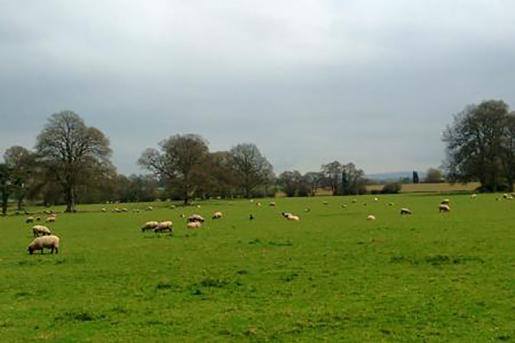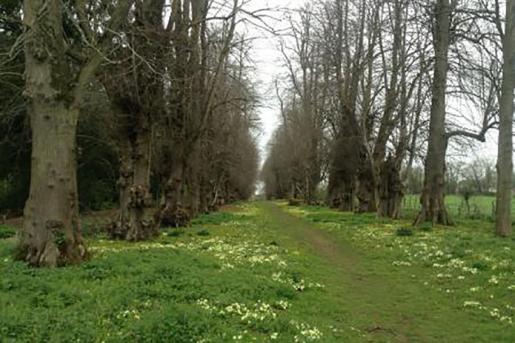- Parkland
Poltimore House was an early seat of the Bampfylde family (Sir GW Bampfylde became Lord Polimore in 1831), with considerable later improvements. In 1800, Swete visited and wrote that ‘I found it to be an edifice of modern date, consisting of a handsome front with two small projecting wings, which detracted very much from the degree of elegance that the mansion would otherwise have possessed. I have not a word to say in regard to the grounds or Park, which lies in front, extended into unvarying flat, having few, if any circumstances of local or adventitious beauty to recommend it.’ In 1822, Lysons wrote that ‘the house is now occupied by servants.’ White (1850) noted that it was ‘a large square cemented mansion in a beautiful park, stocked with deer, and encompassed by verdant and well-wooded hills. His lordship has recently much improved both the mansion and the park and considerably enlarged the latter.’ It was later converted into a hospital and then to an old people’s home. The parkland and a lodge survive as does the 19th century stables and gateposts have huge balls on slender pillars, dated 1681, repositioned near the main road; another pair can be seen north of the village. North of the house, the parkland is dominated by Lime and Poplar avenues, a pinetum and many specimen trees. An obelisk lies in pieces, never having been erected. The recent history and neglect of Poltimore resulted in its acquisition by, the East Devon District Council who passed it to the Poltimore House Trust. The Poltimore gardens and woodlands cover about 30 acres, of which 13, including the land on which the House is built, now belong to Poltimore House Trust. Poltimore was recorded as a Deer Park in 1575, and the area surrounding the House is depicted in late 17th and early 18th century drawings as formal gardens with topiary and statuary. The two avenues of limes (one was felled in 1956 and replaced with poplars) date from about 1710, planted to mark the accession of George I. In 1840, George Bampfylde, 1st Baron Poltimore, commissioned James Veitch, son of John Veitch to plant woodlands on the rising ground behind the mansion. The trees planted at Poltimore House include a cork oak with a span of nearly 90ft, a magnificent copper beech 110 ft high near the church end of the lime avenue, two Lucombe oaks, one of whish is 130 ft in height, Turkey, holm and other species of oak. Among the spectacular conifers are six Wellingtonias, one at 135 ft the tallest tree in the garden, a Californian Redwood , Douglas, Spanish, Noble and Caucasian firs, a Monterey pine three Spruces, Monterey, Yellow and Swamp cypresses, yews, maples and some huge cedars. Facing the east front of the House is a great, spreading Japanese red cedar, several specimens of Monkey Puzzle From the viewpoint steps one can look into the the Arboretum with its magnificent trees.
Poltimore House is listed Grade II*. Lodge and former stables listed Grade II.
Cherry & Pevsner: The Buildings of England – Devon, 1989: 688-90
S Pugsley: Devon Gardens – An Historical Survey, 1994: 6, 92, 94, 125, 127-29
T Gray: The Garden History of Devon, 1995: 179-80


